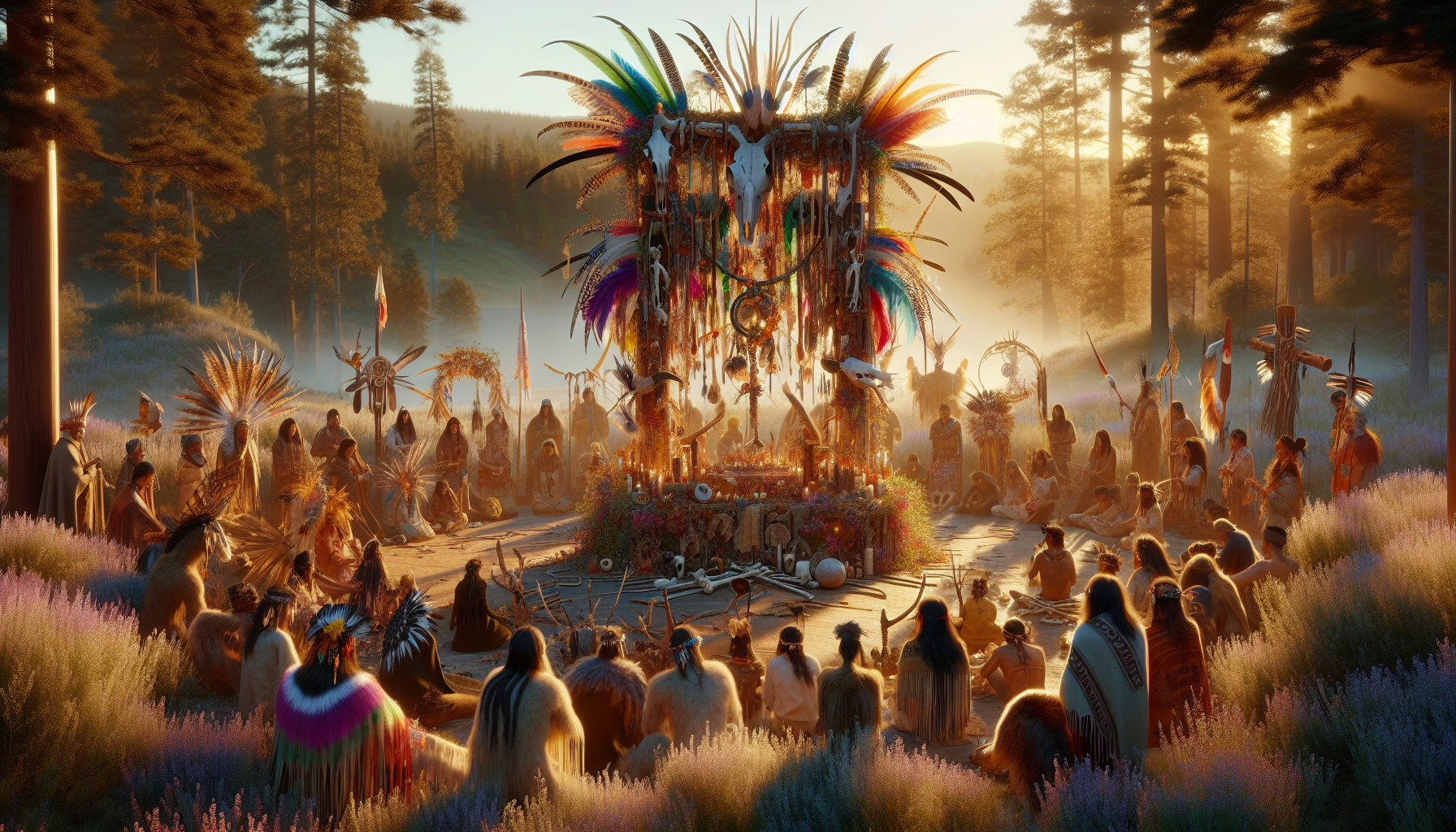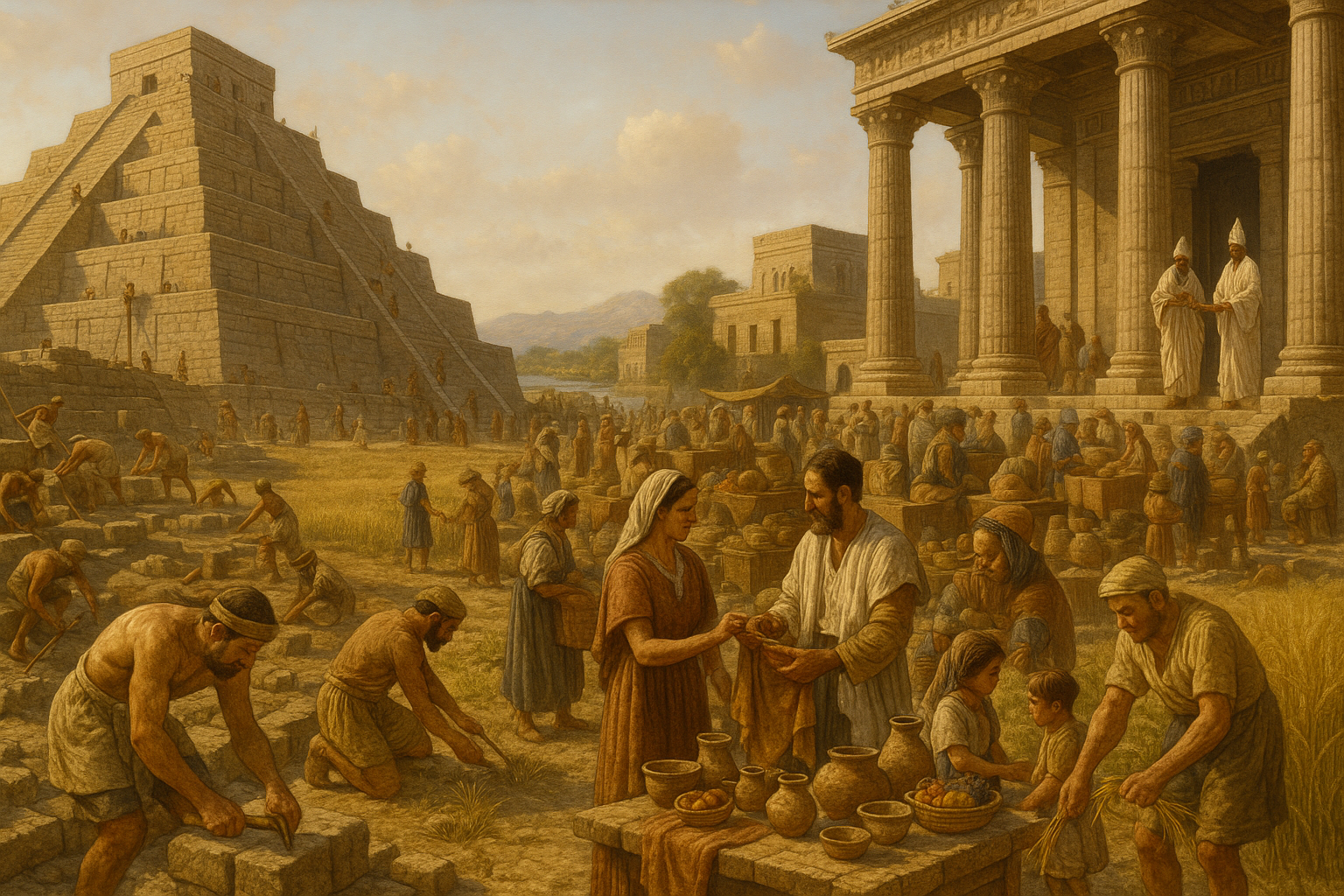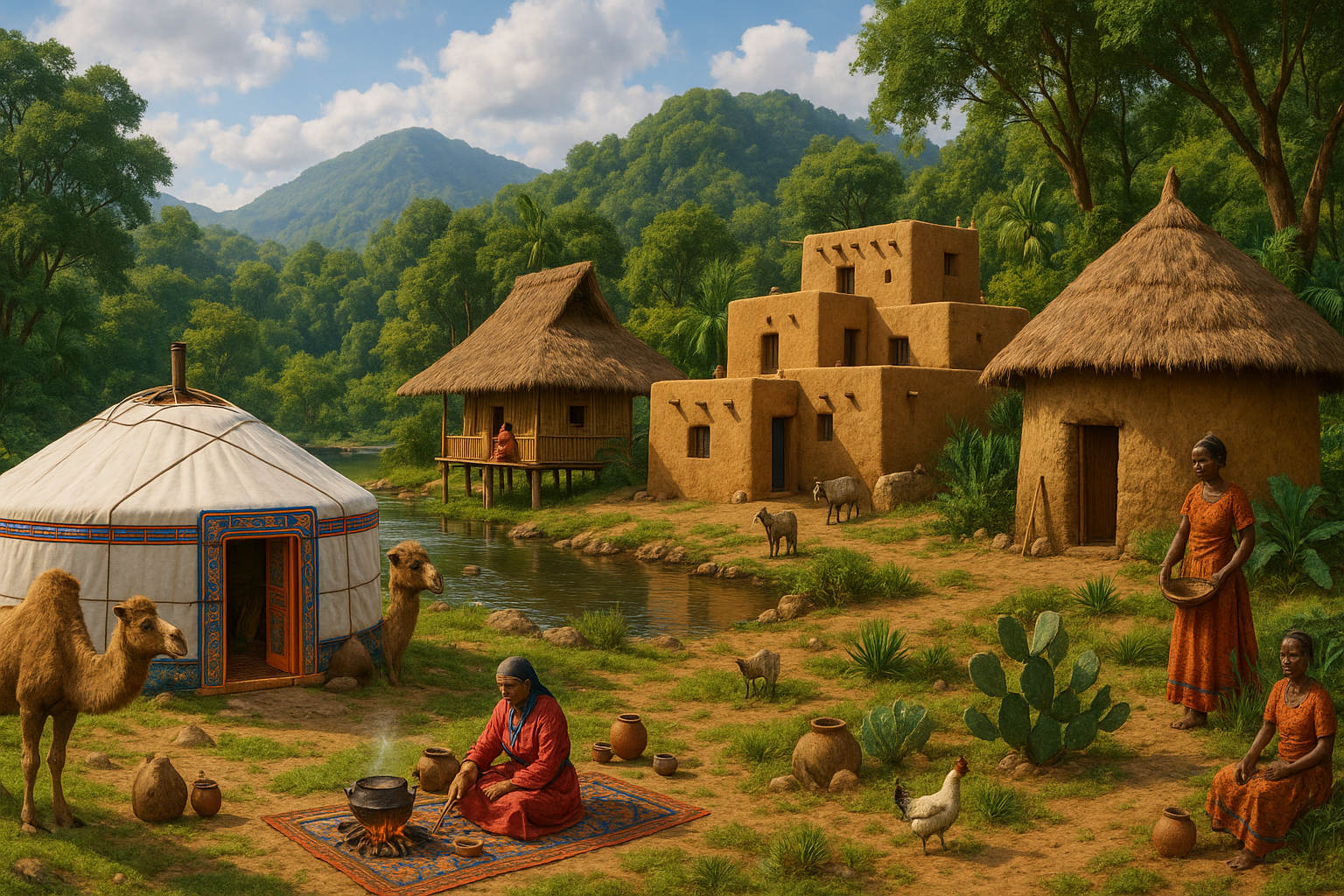In a world increasingly drawn towards modernity, the allure of ancient traditions remains a beacon of cultural identity and spiritual significance. The use of sacred symbols, particularly feathers and bones, in traditional celebrations is a testament to the deep-rooted connections humans maintain with nature and ancestral heritage. These elements, often overlooked in contemporary society, hold profound meanings and serve as powerful tools for storytelling and connection across generations. 🌿
Feathers and bones, though seemingly simple, are imbued with spiritual and symbolic weight in many cultures worldwide. Their inclusion in rituals and celebrations is not merely decorative; it embodies a bridge between the physical and the metaphysical. Feathers, with their association with birds, symbolize freedom, communication with the divine, and a link to the skies. Bones, on the other hand, are emblematic of strength, endurance, and the continuity of life. Together, they play pivotal roles in ceremonies that honor deities, ancestors, and the cycles of nature.
This exploration delves into the myriad ways different cultures harness the power of these sacred symbols. From the intricate feather headdresses of Native American tribes to the bone carvings used in Maori ceremonies, each tradition offers a unique perspective on the universe and our place within it. These practices not only celebrate the past but also instill a sense of belonging and purpose in the present, reminding communities of their roots and shared histories.
As we journey through these time-honored customs, the significance of feathers and bones in traditional celebrations emerges as a rich tapestry of meaning and beauty. Their enduring presence in cultural rituals is a powerful reminder of the universal human desire to connect with something greater than oneself. Join us in uncovering the layers of history, belief, and artistry that make these symbols timeless treasures in the cultural lexicon. 🌟
The Significance of Feathers in Traditional Celebrations
Feathers have long held a sacred place in various cultures worldwide, symbolizing everything from freedom and spirituality to strength and wisdom. Their delicate nature combined with their vibrant colors make them perfect emblems in traditional celebrations. For many indigenous tribes, feathers are more than mere decorations; they serve as vital components in rituals and ceremonies, representing a connection to the divine. In Native American cultures, for example, eagle feathers are particularly revered, often seen as a bridge to the spiritual world. These feathers are used in ceremonial headdresses, prayer sticks, and sacred bundles, believed to carry prayers to the heavens.
In other cultures, feathers are used to symbolize ascension and spiritual evolution. In ancient Egypt, the feather of Ma’at was a symbol of truth and justice, playing a crucial role in the judgment of the dead. Ma’at’s feather was weighed against the heart of the deceased to determine their worthiness of entering the afterlife. Similarly, in many African tribes, feathers are integrated into masks and costumes worn during traditional dances, believed to bring protection and blessings from ancestors.
Feathers also feature prominently in Celtic traditions, where they are associated with the Otherworld. Druids used feathers in their rites, believing they could help communicate with spirits. Feathers were often worn in hats or woven into garments as talismans for protection and luck. 🦅
The Role of Bones in Ancestral Rites
Bones, much like feathers, have been integral to traditional celebrations, especially in rites that honor ancestors and the deceased. In many cultures, bones are seen as symbols of life and death, representing the eternal cycle of existence. They are often used in rituals to invoke ancestral spirits, seeking guidance and blessings.
In the Day of the Dead celebrations in Mexico, for example, bones play a significant role. Calaveras, or decorative skulls made of sugar, are used to honor deceased loved ones, representing the continuation of life beyond death. This celebration is a blend of Aztec and Catholic traditions, where bones symbolize the joyful remembrance of those who have passed.
Similarly, in various African cultures, bones are used in divination practices. Sangomas, or traditional healers, cast bones to communicate with the spirit world, seeking insights into personal and communal issues. Each bone represents different aspects of life, and their arrangement is interpreted to provide guidance.
Bones also hold a sacred place in the rituals of the Aboriginal peoples of Australia. They are often used in ceremonies to connect with the Dreamtime, the spiritual realm of ancestors. Ritual objects crafted from bones, such as bullroarers and clapsticks, are believed to hold the essence of the ancestors, facilitating communication and maintaining cultural continuity.
Symbolic Meanings Across Cultures
Feathers and bones are laden with symbolic meanings that vary across cultures, yet they often converge in representing aspects of spirituality and the cycle of life. In Hinduism, feathers are associated with the god Garuda, a divine bird creature that symbolizes speed and martial prowess. Feathers of the peacock, associated with the god Krishna, are also considered auspicious and are often used in religious decorations and ceremonies.
In contrast, bones are sometimes associated with darker themes, representing mortality and the inevitability of death. However, they are also seen as vessels of life, carrying the essence of those who have passed on. In Tibetan Buddhism, the use of bones in ritual objects, like the kangling (a trumpet made from a human femur), symbolizes the impermanence of life and the importance of spiritual practice.
In the Maori culture of New Zealand, feathers are often integrated into cloaks and headdresses worn by chiefs and warriors. These garments are considered treasures, embodying the mana, or spiritual power, of the wearer. Bones, particularly those of revered ancestors, are also treasured, often used in carvings that tell the stories of the tribe’s lineage and history.
Modern Interpretations and Uses
In contemporary times, the use of feathers and bones in traditional celebrations has evolved, blending ancient practices with modern aesthetics. Feathers, for example, have found their way into fashion, art, and interior design, often used to evoke a sense of bohemian style or spiritual symbolism. Festivals like Burning Man celebrate the artistic and spiritual aspects of feathers, incorporating them into elaborate costumes and art installations.
Bones, too, have found a place in modern art and fashion, often used to make statements about life, death, and the human condition. Artists may use bones in sculptures to provoke thought and conversation about mortality and the cycles of nature. In jewelry design, bones are sometimes used as a nod to ancient practices, serving as both fashion statements and spiritual symbols.
While the contexts may change, the fundamental reverence for feathers and bones persists. Their continued use in various forms highlights the enduring human fascination with the natural world and the mysteries it embodies. As society progresses, these sacred symbols continue to inspire and connect people to their cultural roots, serving as reminders of the interconnectedness of all life.
Feathers and Bones in Environmental Contexts
The use of feathers and bones also prompts discussions about environmental sustainability and ethical sourcing. As these materials often come from animals, there is a growing awareness about the impact of their use on wildlife populations and ecosystems. Conservationists and artisans alike are increasingly advocating for responsible sourcing, ensuring that the use of feathers and bones does not contribute to the decline of species or habitats.
In some communities, there is a move towards using found feathers and bones, collected from natural environments without harming living creatures. This practice not only supports environmental sustainability but also aligns with the spiritual belief in honoring the natural world. By respecting the origins of these materials, practitioners uphold the integrity of their cultural practices and contribute to the preservation of biodiversity.
Efforts are also being made to educate the public about the significance of these materials and the importance of sustainable practices. Workshops and educational programs often focus on teaching the cultural and environmental importance of feathers and bones, encouraging participants to appreciate their symbolic meanings while advocating for ethical use.

Conclusion
In conclusion, the enduring significance of feathers and bones in traditional celebrations underscores their deep-rooted symbolic power across diverse cultures. Feathers, with their ethereal beauty and spiritual connotations, continue to serve as powerful emblems of freedom, spirituality, and connection to the divine. They are cherished across indigenous communities, from Native American rituals to Celtic traditions, each culture imparting its unique interpretation and reverence. Similarly, bones serve as poignant reminders of life’s cyclical nature, representing both mortality and ancestral wisdom. Their use in ancestral rites, whether through the Day of the Dead celebrations or the divination practices of African tribes, highlights a universal quest for spiritual connection and guidance.
In contemporary contexts, these sacred symbols have seamlessly blended ancient traditions with modern aesthetics, appearing in fashion, art, and even festivals like Burning Man. This evolution highlights the human capacity for cultural adaptation while maintaining a profound respect for the past. The growing awareness of environmental sustainability also adds a layer of responsibility, encouraging ethical sourcing and conservation efforts. This ensures that the use of feathers and bones respects both cultural integrity and ecological balance.
Ultimately, the integration of these symbols in celebrations reflects humanity’s enduring fascination with the natural world and its spiritual mysteries. Their timeless appeal serves as a bridge between past and present, fostering a sense of interconnectedness and reverence for all life. 🪶
Toni Santos is a visual storyteller and experimental artisan whose work explores the strange frontiers where science meets art. Fascinated by the forgotten, the obscure, and the wonderfully absurd, Toni brings bizarre scientific experiments to life through provocative visual narratives and handcrafted creations that blur the line between curiosity and discovery.
His journey is rooted in a passion for the eccentric side of science — from electric shocks on cadavers to botany in hostile environments, from Victorian medical oddities to animal behavior gone rogue. Each project Toni undertakes sheds light on real (and sometimes questionable) scientific ventures that push the boundaries of human understanding.
With a background in visual design and hands-on craftsmanship, Toni blends artistic precision with conceptual boldness. His creations aren’t just decorative — they provoke, disturb, and invite the viewer to reconsider what counts as science, progress, or even sanity. Often inspired by true experiments — like galvanic resurrection, psychological endurance tests, or 19th-century pseudo-science rituals — Toni’s work reanimates these bizarre chapters of history with aesthetic intrigue and critical reflection.
As the creative force behind Vizovex, Toni invites you to explore a world where the strange becomes symbolic, the grotesque becomes beautiful, and every experiment tells a story worth unearthing.
His work pays tribute to:
The brilliant madness of forgotten experiments
The symbolic power of science at the edge of reason
The beauty in questioning what we think we know
Whether you’re a curious mind, a lover of scientific history, or simply drawn to the uncanny, Toni welcomes you to explore a realm where aesthetics and absurdity collide — one experiment, one mystery, one creation at a time.





